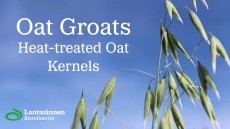FSANZ considers reinstating erythrosine for icings
Erythrosine is a cherry pink dye that is presently allowed in Australia, New Zealand and the EU only in preserved cherries, such as maraschinos, up to a level of 200mg/kg. In the US, however, it is permitted in a wider range of foods, including sweets and other products aimed at children.
Indeed, until the early 1990s the colouring was allowed in more products in Australia and New Zealand, including confectionery, cakes, biscuits and milk. However in 1991 the decision was taken to restrict its use to frankfurter skins, fish paste and cherries – and uses other than in cherries (where other dyes are unacceptable because they migrate into other food components) were phased out over the next few years.
Investigations of erythrosine’s safety have included animal studies of its effect on the thyroid gland and sensitivity to light.
In March last year, however, FSANZ has received a petition from Golding Handicrafts to allow the sale of food colouring preparations containing erythrosine, primarily to the home cake-decorating market for occasion cakes, but with professionals such as commercial bakeries making up a “less important market segment”.
In its initial assessment report FSANZ has accepted the application and will now conduct a full assessment. Part of this is the invitation of public submissions on the proposal, which will be accepted until October 27.
Any change in erythrosine use would require a change to Standard 1.3.1 of the Australia New Zealand Food Standards Code, governing additives.
Grounds for petition
Goldings Handicrafts argues for the expanded use of erythrosine on the grounds that food colours using it have “superior colouring characteristics”. It proposes a maximum level of 2 mg/kg prepared foods, and says that children are unlikely to eat enough icing to exceed the acceptable daily intake of 0.1mg erythrosine per kg of body weight per day.
It also says that erythrosine is used at lower levels than other food colourings, so could reduce the level of colouring used overall. In addition, erythrosine is kosher but other red colourings are not.
According to the company, widening the permitted use of erythrosine would extend consumer choice, and also put Australian and New Zealand food manufacturers on a level playing field to export products to the US, as manufacturers based there can use it in more kinds of products.
FSANZ has published a raft of questions it would like stakeholders to address in their submissions, including whether they would consider using erythrosine at home or in their businesses, and evidence for its technical superiority against other red colours.
The regulator has stated that it “will not compromise public health and safety in making any decision to extend the permission for using erythrosine”.
Colour suspicions
The question of expanding erythrosine’s use comes at a curious time given increasing consumer wariness of artificial colours.
Just this month a campaign called ‘Kids First’, backed by Additive Alert, Food Intolerance Network, and Additive Education, called on FSANZ to ban the six food colourings implicated in the Southampton study, which linked a cocktail in which they were included to hyperactivity in children.
The so-called Southampton colours are sunset yellow (E110), tartrazine (E102), carmoisine (E122), ponceau 4R (E124), quinoline yellow (E104), and allura red (E129).
Kids First has not given its opinion on erythrosine.
In the UK, however, some suspicion of erythrosine has filtered through to the additive-aware consumer market. Retailer Asda announced in May 2007 that would remove a raft of artificial additives from its private label products – and erythrosine was listed alongside carmine, quinoline, and sulphate ammonia caramel.
And according to media reports, Nesquik Strawberry products were recently removed from supermarket shelves in South Africa after they were found to contain erythrosine. In that country, the dye can be used in sugar confectionery, preserved cherries, and meats only.
FSANZ’s initial assessment report and call for public submissions can be found here.




















